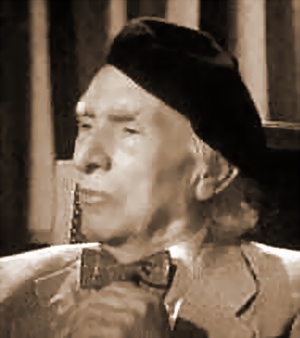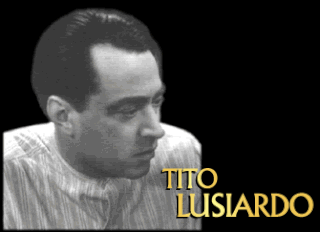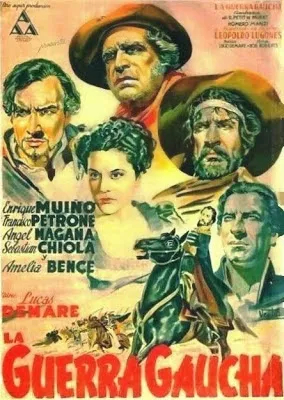Related Research Articles

John Alton, born Johann Jacob Altmann, in Sopron, Kingdom of Hungary, was an American cinematographer of Hungarian-German origin. Alton photographed some of the most famous films noir of the classic period and won an Academy Award for the cinematography of An American in Paris (1951), becoming the first Hungarian-born person to do so in the cinematography category. He also worked as a director during the Golden Age of Argentine cinema.

Homero Nicolás Manzione Prestera, better known as Homero Manzi was an Argentine tango lyricist, author of various famous tangos. He was also a filmmaker, notable for his work during the classical era of Argentine cinema.

Libertad Lamarque Bouza was an Argentine and Mexican actress and singer, became one of the most iconic stars of the Golden Age of cinema in both Argentina and Mexico. She achieved fame throughout Latin America, and became known as "La Novia de América". By the time she died in 2000, she had appeared in 65 films and six telenovelas, had recorded over 800 songs and had made innumerable theatrical appearances.
Ray Rennahan, A.S.C. was a motion picture cinematographer.

Down Argentine Way is a 1940 American musical film made in Technicolor by Twentieth Century Fox. It made a star of Betty Grable in her first leading role for the studio although she had already appeared in 31 films, and it introduced American audiences to Carmen Miranda. It also starred Don Ameche, The Nicholas Brothers, Charlotte Greenwood, and J. Carrol Naish.
This is an index to pages listing Argentine films ordered by year of release. For an A-Z list, see Category:Argentine films.
José María Beltrán Ausejo was a prolific Spanish cinematographer who worked in Spanish, Argentine, Venezuelan and Brazilian cinema. He was involved in the cinematography of almost 80 films between 1925 and his death, and is best known for his work in Argentina in the 1940s and early 1950s.

Luis Bayón Herrera was a Spanish film director and screenwriter who worked in Argentine film of the 1940s and 1950s. He was "one of the most important directors of the Golden Age of Argentine cinema".

Mario Soffici was an Italian-born Argentine film director, actor and screenwriter notable for his work during the Golden Age of Argentine cinema.

Pierre Bruno Hugo Fontana, otherwise known as Hugo del Carril, was an Argentine film actor, film director and tango singer of the Golden Age of Argentine cinema.

Luis Moglia Barth was an Argentine film director and screenwriter, and one of the influential directors in the Golden Age of Argentine cinema. He directed some 30 films between 1927 and 1959, often screenwriting for his pictures. He died in Buenos Aires, aged 81.

Manuel Romeo was an Argentine film director, screenwriter, dramatist and score composer, one of the most important figures of the Golden Age of Argentine cinema. He directed and wrote over 50 films between 1931 and 1951 even composing the musical scores for several.

Tito Lusiardo was an iconic Argentine film actor and tango singer, notable for his work during the Golden Age of Argentine cinema.

The Gaucho War is a 1942 Argentine historical drama and epic film directed by Lucas Demare and starring Enrique Muiño, Francisco Petrone, Ángel Magaña, and Amelia Bence. It is one of the most celebrated works of the Golden Age of Argentine cinema. The film's script, written by Homero Manzi and Ulyses Petit de Murat, is based on the novel by Leopoldo Lugones published in 1905. The film premiered in Buenos Aires on November 20, 1942 and is considered by critics of Argentine cinema to be one of the most successful films in history.

Lucas Demare was an Argentine film director, screenwriter, and film producer notable for his work during the classical era of Argentine cinema and beyond.

Pedro Jorge Rigato Delissetche, better known by his stage names George Rigaud, Georges Rigaud or Jorge Rigaud, was an Argentine film actor who appeared in 194 films between 1932 and 1981.
Events from the year 1940 in Argentina

Lumiton is a former film production company and current museum located in Munro, Buenos Aires, Argentina. Lumiton Studios was founded in 1932 at the start of the Golden Age of Argentine cinema. Its lowbrow, populist films appealed to local audiences and were highly successful in Argentina and throughout Latin America. It was the main competitor to Argentina Sono Film in the 1940s.

Argentine Nights is a 1940 musical film directed by Albert S. Rogell and starring The Andrews Sisters. It was their first film.

Adrián Cuneo (1912–1995) was an Argentine film actor. He co-starred with the comedian Niní Marshall in a number of films.
References
- Manrupe, Raúl; Portela, María Alejandra (2001). Un diccionario de films argentinos (1930-1995) (in Spanish). Buenos Aires: Editorial Corregidor. ISBN 950-05-0896-6.
